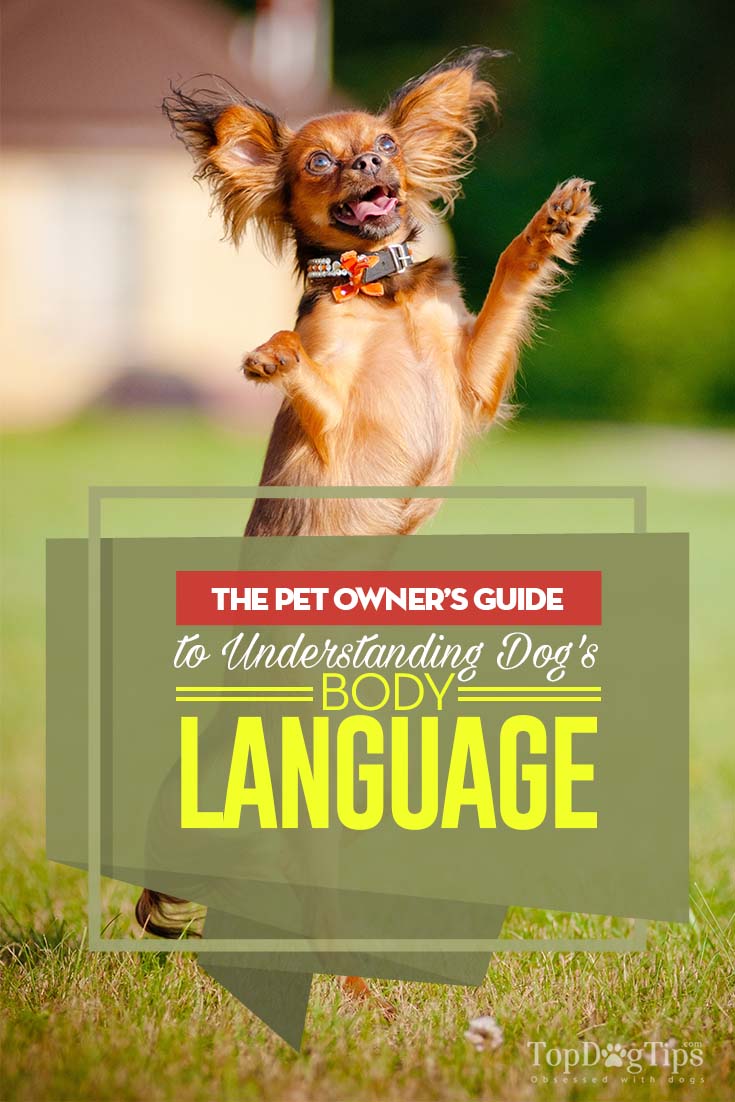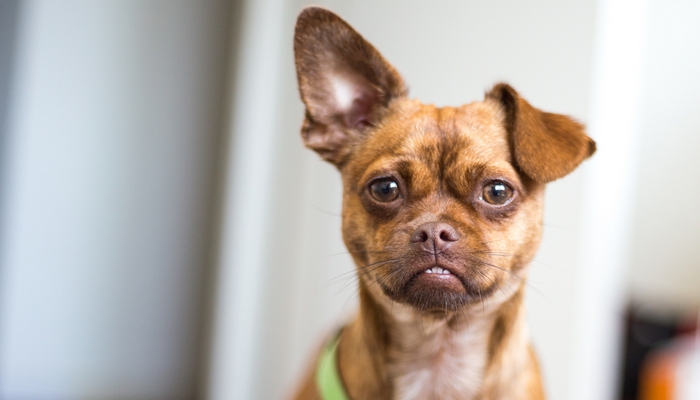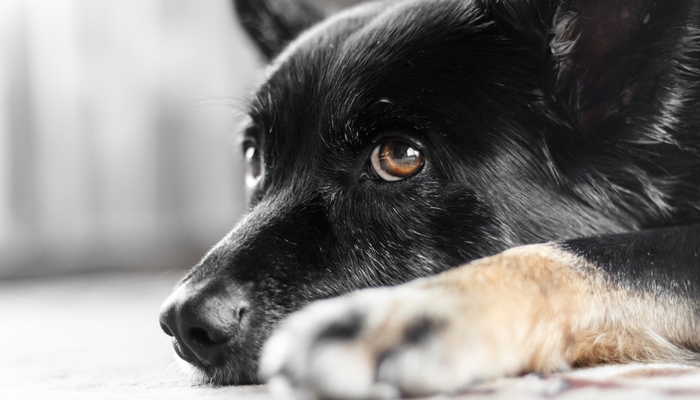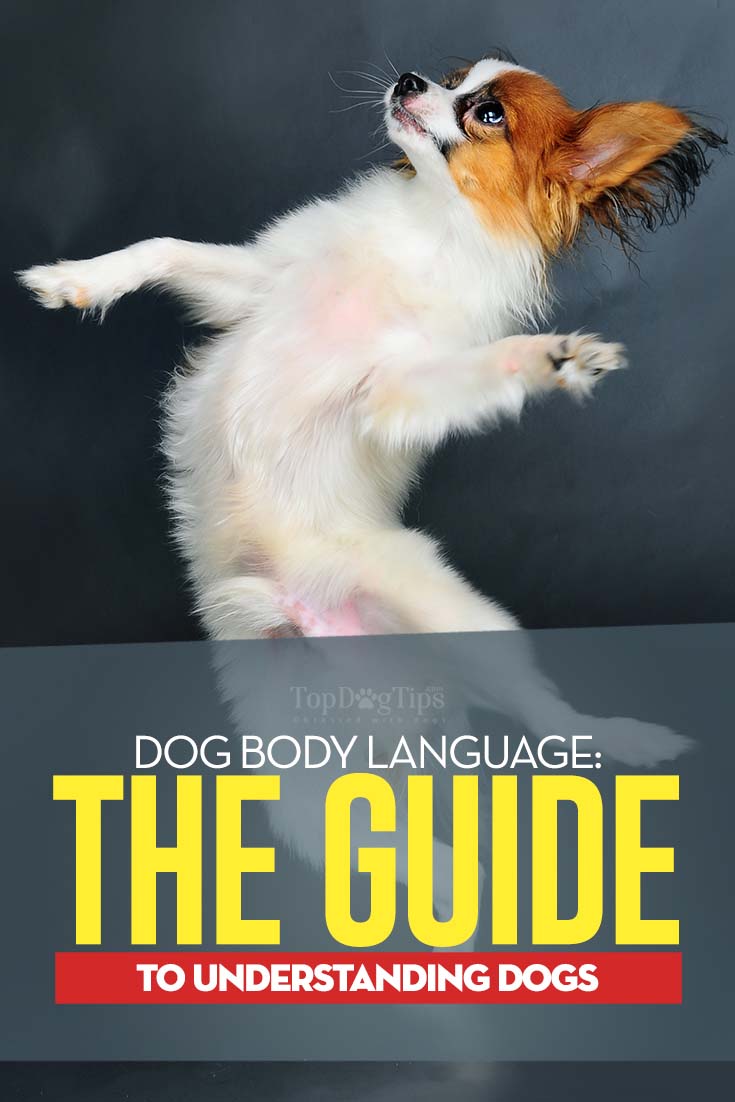Dogs can't verbally communicate in a way that we can understand.
Fortunately, a dog's body language provides plenty of cues for us to interpret their current frame of mind.
Understanding it will help you foster a stronger bond.
A dog's body language is a fairly accurate indicator of what they are feeling at any given time.
Just like humans, dogs can change moods in seconds.
Something as simple as you take one step closer can send a calm or relaxed dog into an anxious or fearful posture.
What's even more amazing is a dog's entire body is used to communicate if they feel comfortable or threatened by you.
ALSO READ: Dog Facial Expressions Explained by Science
Why is Dog Body Language Important?
Dog body language is a crucial aspect of responsible ownership.
Understanding your dog's body language can help you communicate better with your pet, build a stronger bond, and avoid misunderstandings that can lead to aggression or anxiety.
By learning to read your dog's body language, you can also identify signs of stress or discomfort and take steps to address these issues before they become more serious.
This can help improve your dog's overall health and well-being.
Knowing how to read dog body language can help you interact safely with other dogs.
By recognizing signs of aggression or fear in other dogs, you can avoid potentially dangerous situations and keep both yourself and your pet safe.
Understanding Dog Body Language Signals
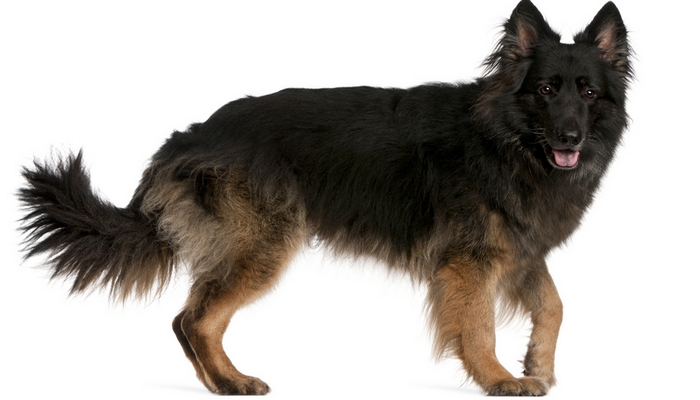
The Basic “Profiles”
There are eight basic “profiles” that we'll be discussing in this article.
We'll discuss the different dog body language signs that you may see when your pet is demonstrating any of these feelings.
Remember, this isn't an exact science.
Dog's can't talk, and every dog is different.
While most of these dog body language signs are common in most dogs, you never know when a canine may have a different reaction to certain stimuli.
Attentive: You are most likely to see this in a dog that has heard a new sound that it cannot identify or see something move in its field of vision.
Anxious or Nervous: You will often see this in dogs when they have been caught in the act of doing something naughty like going through the trash. You will also see this when a dog is presented with a new stimulus that they do not recognize.
Frightened: You will see this in a dog that feels threatened by something they deem a threat to its safety.
Submissive: You are most likely to see this in a dog that is being stared down by another more dominant dog or individual.
Aggressive: You may encounter aggressive dogs in any setting, but most often you will see them behind a barrier or at the end of a chain.
Dogs show aggression when they feel threatened and want to scare away the source of the threat.
Dogs that are abused or neglected may also show aggressive postures because of poor socialization and abuse.
Excited: You will most commonly see this in a dog greeting you when you return home from work.
Playful: You will see this posture when your dog is ready to play, for example when they dig up their favorite tennis ball or you hand them a new toy.
Relaxed: You will see this in a dog that is fully comfortable with their surroundings to the point where they could easily fall asleep.
Dog's Ears
A dog's ears can also provide insight into its emotions.
Ears held high and forward indicate alertness and confidence, while ears pulled back can signal fear or submission.
Additionally, a dog's ear movements can convey different meanings – for example, rapid ear flicks may indicate irritation or discomfort.
Attentive: The ears are up or perked, facing forward in the direction of the source of their attention.
Submissive or Appeasing: The ears are back but not flat against the head or they may be postured sideways.
Anxious or Nervous: The ears are pinned flat against the side of the head and usually pulled downward.
Relaxed: The ears are in a natural position.
Aggressive: The ears are pulled back but not pinned back as a result of the mouth being open and lips back (much like human ears move back when we make aggressive expressions).
Excited: The ears are forward facing.
Dog's Eyes
Relaxed or Neutral: The iris of the eye is easily visible, and the eyes appear “soft”.
Anxious: The pupils are dilated, and the eyes appear to be “wide open”
Fearful or Stressed: The whites of the eyes are visible, and the eyes are wide.
This is often referred to as the “whale eye” or “whaling” and is common in photographs where dogs are confronted with children who lack boundaries.
Submissive: The eyes are usually directed upwards while the body is slunk over and head down.
Aggressive: A firm stare with direct eye contact.
Dog's Tail
Relaxed or Neutral: The tail is held in a neutral or natural position and may or may not be wagging excitedly.
Anxious or Nervous: The tail hangs low, but the very tip may wag.
Frightened or in Pain: The tail is tucked between the back legs and may wrap all the way under the body.
Submissive: The tail is tucked over the underbelly while the dog is on their back exposing their belly.
Aggressive: The tail is held out from the body and waves slowly like a warning flag.
Dominant: The tail is held high, making the dog appear larger.
Excited: The tail wags rapidly.
Playful: The tail is up while the front of the body is down in a play bow. The tail is wagging.
Dog's Posture
Calm or Neutral: The body is held in a natural position.
Anxious or Nervous: The body leans back with the front feet slightly forward. Anxious dogs may also turn the body instead of leaning back.
Fearful: The body is crouched but the back appears to have an arch due to the tail being tucked underneath the body.
Submissive: The vulnerable underbelly is exposed as the dog lies on their back with the paws tucked up and tail tucked around the belly.
Aggressive: The body is held in a stiff posture, the front feet and back feet are usually spaced a little further apart and the head is facing the target of aggression.
Excited: The body is held in a soft posture and the paws are often used to bat or jump on the target of excitement.
Playful: The bottom is up in the air while the front of the body is bowing down with the front paws spaced apart.
Relaxed: The body is often left “open” to vulnerability, for example showing the underbelly without the paw tucking or tail tucking seen in submissive dogs.
Dog's Vocalizations
Calm and Neutral: Few vocalizations.
Anxious and Nervous: Lip licking may be heard.
Frightened: A dog may let out a light whine or even a small growl when they are frightened, depending on the situation.
Submissive: This dog may whimper, but it may remain silent.
Aggressive: A deep growl or loud bark with teeth bared and a hard stare.
Excited: Excited dogs may “yip” or whine.
Playful: Playful dogs tend to make playful vocalizations at their toys or bark playfully to encourage play from a person or another dog.
Dog's Tongue
Calm or Neutral: The tip of the tongue may show over the bottom teeth if the mouth is open. The dog may also pant if they are tired or hot.
Anxious or Nervous: The tongue will repeatedly lick the lips or the nose.
Frightened: The tongue is usually not visible, but if the dog is nervous, it may lick its lips or nose as well.
Submissive: The tongue is usually showing and the mouth open as the dog lies on their back. The dog may also try to lick the more dominant dog.
Aggressive: The tongue may briefly flick over the top teeth, but most often, this dog has their mouth open in a snarling expression.
Excited: The tip of the tongue may show in an open mouth, or the tongue may be held in a neutral position.
Playful: The tongue usually hangs out of the mouth, and the mouth takes on a soft smiling gesture.
Relaxed and Resting: Some dogs will suckle their tongue when relaxed and sleeping.
Dog's Mouth
Calm or Neutral: The mouth is relaxed and usually partially open.
Anxious or Nervous: The mouth is closed and pulled back or the top teeth are showing in a smiling-like expression.
Frightened: The smiling expression with top teeth showing is also seen in frightened dogs.
Submissive: The mouth is either closed or held open in a non-aggressive expression.
Aggressive: The lips are pulled back, the teeth are bared or the mouth is open, teeth showing while the dog barks.
Excited: The mouth is relaxed and open.
Playful: The mouth is open, tongue lolling.
Relaxed: The mouth is soft and closed.
Dog's Paws
Calm or Neutral: All four paws softly placed on the ground.
Anxious or Nervous: The back paws are spaced widely as are the front paws. The front paws are pushed forward slightly as the dog leans their body backward.
Frightened: All four paws are on the ground, but the legs are in a crouched position as the dog tries to make themselves look smaller.
Submissive: The dog is on their back and the front paws are pulled into the chest. The back legs are usually slightly splayed.
Aggressive: The front paws are planted firmly, back legs are slightly bent as if the dog is ready to spring forward.
Excited: The paws may or may not be on the floor, the dog may be batting or jumping in excitement.
Playful: The front paws and “forearms” are flat on the floor while the dog stands on the back legs with back paws planted firmly.
ALSO: Does My Dog Love Me? Myths and Facts About Dog Emotions
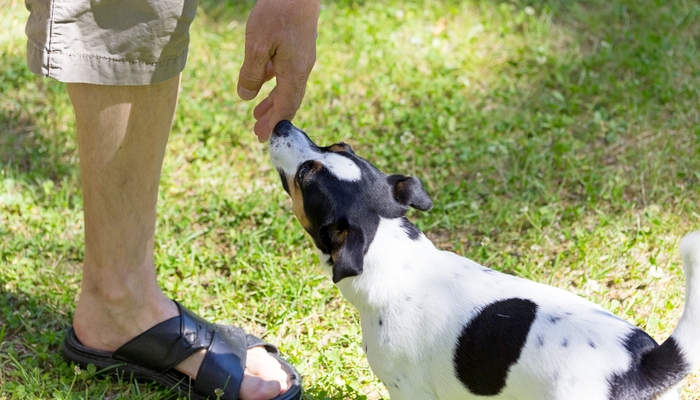
What to Do If You Encounter a Strange Dog?
Calm or Neutral: This dog is comfortable with the current situation and poses you no threat. This may change if you move closer.
If you want to approach the dog, ask their handler if you may.
If no handler is present and the dog is loose, watch the dog body language as you slowly move closer.
Anxious or Nervous: An anxious or nervous dog may bite out of fear. Your best bet is to leave this dog alone and not get any closer, even if this dog is leashed with their handler.
If this is a loose dog, do not try to approach them, but contact animal control authorities.
Back away if you notice any signs of aggressive dog body language.
Frightened: The dog body language in this case will be similar to what I explained above with an anxious or nervous dog.
Submissive: A submissive dog is generally safe to approach. They have already assessed you to be the more dominant in the situation. If the dog is with their handler, it's still best to ask if you may approach. If the dog is loose, approach with caution and monitor any changes in the dog body language.
Aggressive: First of all, DO NOT RUN! Although it's your first instinct, running from an aggressive dog will only invite it to chase you.
Instead of running, stand still but look away (while keeping the dog in your field of vision).
DO NOT make direct eye contact.
As the dog body language begins to soften, slowly walk backward until you are out of sight. Never turn your back on an aggressive dog.
Excited: This dog is happy to see you and initiating contact from you, feel free to interact with them so long as you have permission from their owner.
Playful: The dog body language in this case will be similar to what I explained above with an excited dog.
Relaxed: This dog is happy as they are. If they are not sleeping and show no change in posture when you approach you may pet them on the back or chest. If the dog looks tired or is sleeping, leave them alone! Waking a sleeping dog or bothering a tired dog can result in startling them which will get you bitten.
How to Communicate with Your Dog Using Body Language
Communicating with your dog using body language is an effective way to build a strong bond and mutual understanding.
Here are some tips to help you communicate with your furry friend:
- Use eye contact to show your dog that you are paying attention to them.
- Learn your dog's body language and respond appropriately.
- Use positive reinforcement, such as treats and praise, to encourage good behavior.
- Use a calm and relaxed tone of voice to communicate with your dog.
Remember that dogs communicate primarily through body language, so it's essential to pay attention to their posture, ear position, and tail wagging.
By understanding your dog's body language and responding appropriately, you can build a strong and healthy relationship with your furry friend.
Additionally, it's important to avoid using aggressive or threatening body language, such as staring down your dog or getting in their face.
This can cause your dog to feel threatened and may lead to aggressive behavior.
Final Thoughts
Knowing how to read dog body language is crucial for any dog owner.
By learning how to read your dog's signals, you can better understand their emotions and intentions.
This knowledge can help prevent misunderstandings and improve the bond between you and your furry friend.
Remember that dogs communicate differently than humans. Canine communication is largely nonverbal, so it's important to pay attention to your dog's body language and vocalizations.
By doing so, you can pick up on subtle cues that may indicate your dog is feeling anxious, scared, or happy.
Additionally, it's important to be aware of your own body language when interacting with your dog.
Dogs are very perceptive and can pick up on even the slightest changes in your tone of voice and body posture. By remaining calm and relaxed, you can help your dog feel more at ease and comfortable around you.
READ NEXT: 20 Best Dog Books On Canine Health and Care


